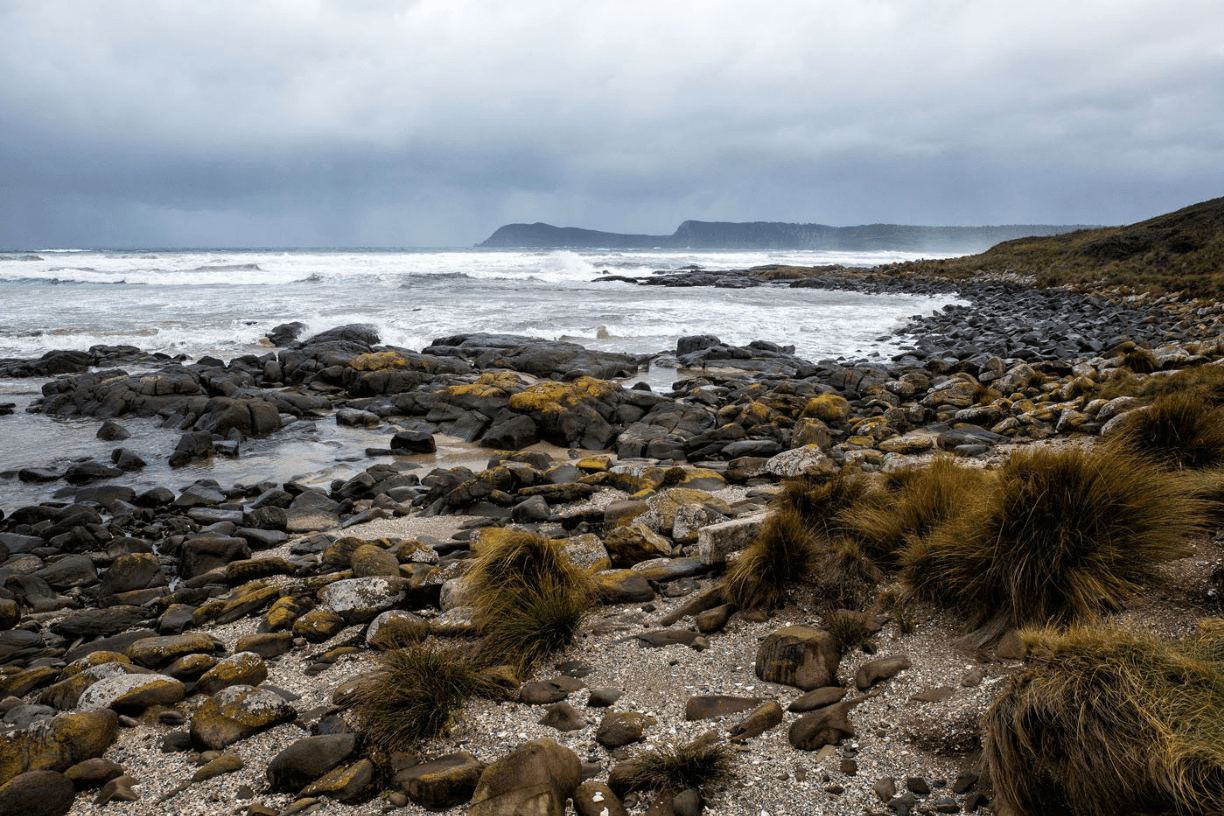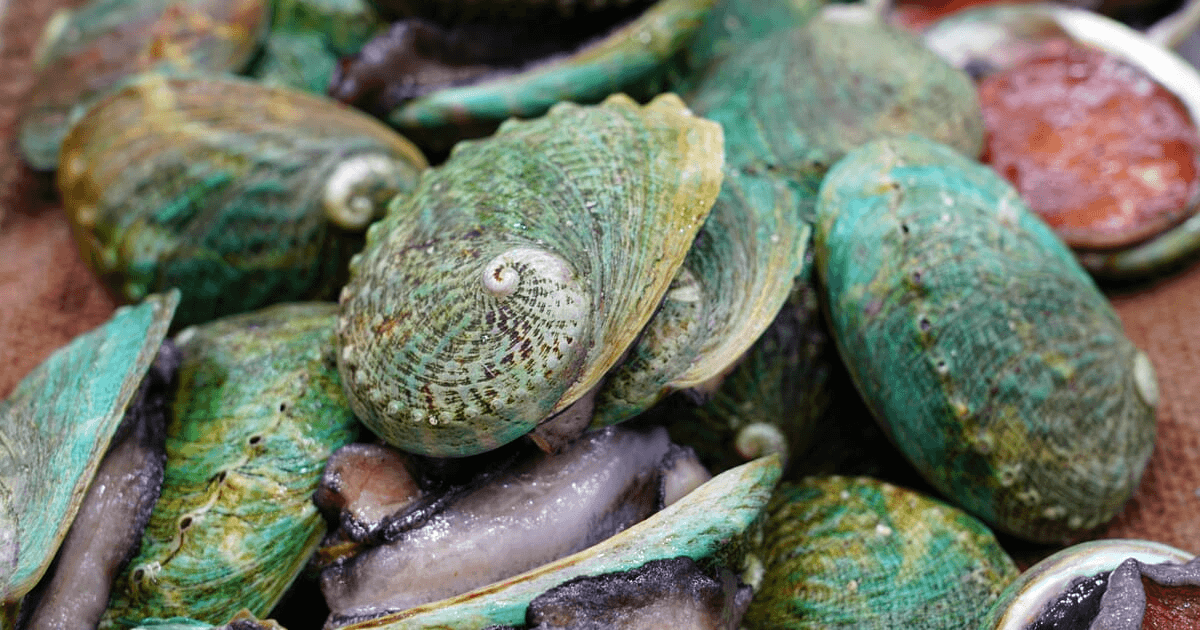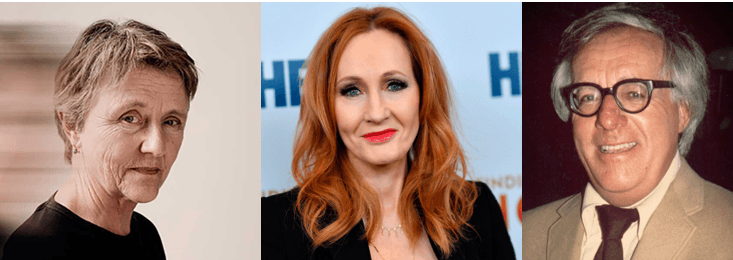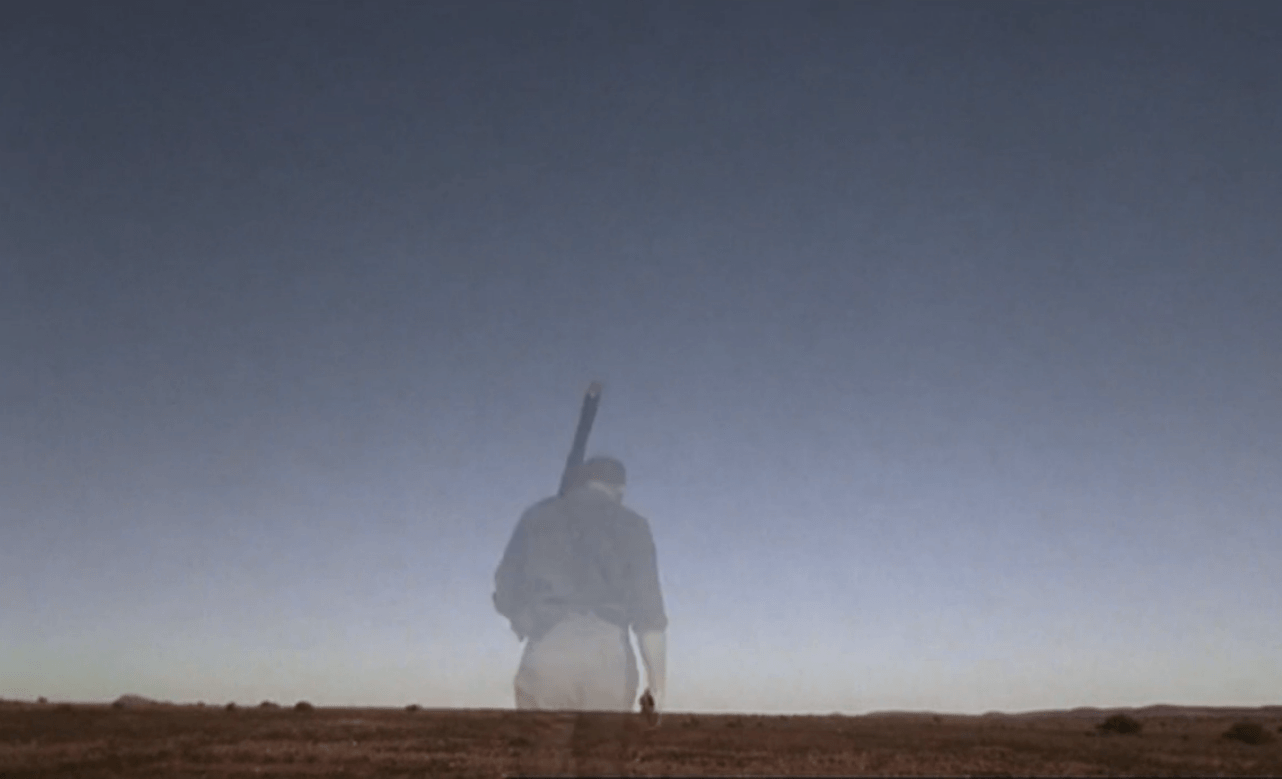Past the Shallows
The Castle
Robert Gray poetry
The Craft of Writing

This is a picture of the real place in which 'Past the Shallows' is set. In which town, state, and country, is the novel set?
Cloudy Bay, Tasmania, Australia
Name all the modules you have studied throughout the HSC course.
(*Hint* You've seen these written out a GAZILLION times on handouts and PPT presentations throughout the year.)
Common Module: Texts and Human Experiences
Module A: Language, Identity & Culture
Module B: Close study of Literature
Module C: The Craft of Writing
What is George's surname in 'Past the Shallows'?
Fuller
Identify TWO recurring motifs in the novel.
Unpredictable image of the ocean; shark-tooth necklace; Harry's nausea (link between nausea and trauma); repressed emotions.
These are the first names of all the Kerrigan children in age order (from youngest to oldest)
(1) Dale
(2) Steve
(3) Tracey
(4) Wayne
Robert Gray said that his poem, 'Byron Bay: Winter', was written in a traditional poetic form, but with loosened rhyme and rhythm.
What is the traditional form he has used?
Ballad
"Dear Mrs Dunkley. You're long gone, and I'm nearly seventy. But, oh, I wish you weren't dead."
What language technique is made prominent by the use of contractions and the interjection 'oh' in this line from 'Dear Mrs Dunkley'?
Colloquial language

Where is this famous location, as referenced in one of Robert Gray's poems?
Cape Byron Lighthouse, Byron Bay, NSW
Explain TWO purposes of Module C: The Craft of Writing.
Answers from the rubric could include:
- to strengthen and extend their knowledge, skills and confidence as writers
- to learn to write for a range of authentic audiences and purposes to convey ideas with power and increasing precision
- to study prescribed texts to use as models and stimulus for the development of their own ideas and written expression
- to examine how writers of complex texts use language creatively and imaginatively for a range of purposes, to describe the world around them, evoke emotion, shape a perspective or to share a vision
- to learn to appreciate, analyse and assess the importance and power of language
- to reflect on the complex and recursive process of writing to further develop their ability to apply their knowledge of textual forms and features in their own sustained and cohesive compositions
- to generate and explore ideas through discussion and speculations.
- to engage in the stages of drafting and revising
- to experiment with a range of language forms and features (for example imagery, rhetoric, voice, characterisation, point of view, dialogue and tone)
- to develop editing skills, learning to apply the conventions of syntax, spelling, punctuation and grammar appropriately and effectively for publication
- to work independently and collaboratively to reflect, refine and strengthen their own skills in producing crafted, imaginative, discursive, persuasive and informative texts
(a) What is featured in the image below?
(b) What is the name of the island in 'Past the Shallows' where it is found?

(a) This is abalone. The men in the Curren family are abalone fisherman, braving the frigid ocean to dive for this rare commodity.
(b) Past the Shallows takes place on Bruny Island just off the coast of Tasmania, an Australian state that supplies 25% of the world’s abalone harvest.
Identify the MOST obvious technique in the following quote and explain its effect on meaning:
"[Miles] climbed onto the rails, was ready to jump, but Dad grabbed him up—held him like stone."
SIMILE
Parrett underscores the crushing strength with which Dad holds Miles down by comparing Dad's grip to stone. Conveys the power imbalance between the two and metaphorically emphasises the emotional disconnect between father and son.
These are the names of the (1) director, (2) production company and (3) year in which the film The Castle was released.
(1) Rob Sitch
(2) Working Dog Productions
(3) 1997
This question has TWO parts.
(a) In which NSW town did Robert Gray grow up?
(b) Which of Robert Gray's hobbies does he view as a natural complement to poetry?
(a) Coffs Harbour
(b) Painting
What fictional genre does Ray Bradbury's, 'The Pedestrian' short story, fall under?
Dystopian fiction

What shot type and lighting technique is used in this scene from 'One Night the Moon'?
Close-up shot and low-key lighting
Complete the cloze passage below from the Common Module rubric:
Students explore how texts may give insight into the a_______s, pa_______ and in_____________ in human behaviour and motivations.
Students explore how texts may give insight into the ANOMALIES, PARADOXES and INCONSISTENCIES in human behaviour and motivations.
What is the name of the developer group that wants to acquire the Kerrigan home, and for what purpose?
The Barlow group; to build a new freight terminal at the airport.
Identify TWO key structural features of the novel.
Cyclical/circular narrative structure; non-linear structure; flashbacks; multiple character perspectives; use of language changes to reflect childishness/maturity.
Recall two iconic phrases from the dialogue in the film that have become part of the wider Australian culture.
- “Tell him he's dreamin'” ...
- “We're going to Bonnie Doon. ...
- “How's the serenity? ...
- “Dale dug a hole. ...
- “Suffer in your jocks!” ...
- “It's not a house. ...
- “It's the vibe ...
- “What do you call this?” “Chicken.”
Read this poem excerpt:
"The train’s shadow, like a bird’s,
flees on the blue and silver paddocks,
over fences that look split from stone,
and banks of fern,
a red bank, full of roots,
over dark creeks, where logs are fallen,
and blackened tree trunks."
(a) What poem is this taken from?
(b) What technique is being employed in this excerpt, which causes an accumulation of visual imagery?
(a) Journey, the North Coast
(b) Asyndeton
After writing a creative piece, there are many questions you might ask yourself during the editing process to check the quality of your work. What are THREE of these questions?
Answers may include:
- Have you successfully achieved your artistic purpose?
- Have you used language forms and features to create meaning?
- Have you used symbolism, imagery, rhetoric, voice, characterisation, point of view, dialogue and tone to establish your purpose?
- Have you used simple and complex sentences to create meaning throughout your response?
- Is the meaning within your sentences clear?
- Have you proofed your spelling, punctuation and grammar?
- Have you received feedback from your peers and your teacher?

In Module C: The Craft of Writing, you have studied THREE prescribed texts written by these people.
Name all three of them as well as the title and form of their respective text.
Pic 1: Helen Garner ('Dear Mrs Dunkley')
Pic 2: J.K. Rowling ('The Fringe Benefits of Failure', Harvard Commencement Address)
Pic 3: Ray Bradbury ('The Pedestrian')
Complete the cloze passage below from the Module B rubric:
Students explore and analyse the particular id___ and cha____________s of the text and understand the ways in which these ch_____________s establish its di_________ qualities.
Students study one text chosen from the list of prescribed texts. They engage in the extensive exploration and interpretation of the text and the ways composers (authors, poets, playwrights, directors, designers and so on) portray pe____e, ideas, set_____ and sit_______ in texts.
Students explore and analyse the particular IDEAS and CHARACTERISTICS of the text and understand the ways in which these CHARACTERISTICS establish its DISTINCTIVE qualities.
Students study one text chosen from the list of prescribed texts. They engage in the extensive exploration and interpretation of the text and the ways composers (authors, poets, playwrights, directors, designers and so on) portray PEOPLE, ideas, SETTINGS and SITUATIONS in texts.
This question has THREE parts. Identify the correct name of the poem from which these quotes have been drawn:
(a) "And standing where I see the mirage of the city/I realise I am in the future."
(b) "Sprigged trees; a vista of Pre-Raphaelite shine:/beneath gentian hills, a billiard table green;"
(c) "They seemed to whisper, slipping amongst each other,/always hovering, as though resolve were ill."
(a) Flames and Dangling Wire
(b) Description of a Walk
(c) Harbour Dusk
Identify and describe the effect of the TWO figurative devices used in this interaction between Miles and Joe, after the death of Harry on the fishing vessel:
'You came back,' he said.
Joe nodded. He looked down at his hands and let go of the bed. Miles knew they were shaking.
'The wind was too strong,' he said. 'I couldn't get through the strait. I couldn't leave.'
And Miles knew it was lucky Joe hadn't been lost out there, too. He was lucky.
PATHETIC FALLACY/SYMBOLISM: The wind being 'too strong' to allow Joe's boat to pass through the strait and leave Bruny Island is symbolic of nature (i.e. a 'higher power' like fate) interfering in Joe's journey in order to bring him back to where he was needed most. The aggression and resisting force of the wind functions as pathetic fallacy echoes the brutality of his father's dominance and aggression during the incident on the fishing boat, which was happening at the same time Joe was attempting to leave (plot line unity). In the same way, the wind could also represent the strength of Joe's conviction to stay and support his brothers.
METAPHOR: The reference to Joe being lucky to have not been "lost out there" too, goes beyond the literal interpretation of his possible death, and signifies the potential loss of his identity/purpose and connection to his brothers if he left.
This is the name of the famous legal case referenced in the film. You must also say in what year the case decision was handed down, and what legal principle did it establish in Australia.
(1) The Mabo decision
(2) 1992
(3) Overturned the legal principle of terra nulius, which allowed Indigenous Australians to claim native title rights over their land.
Read the following excerpt:
"Someone who worked here would have to weep,
and so we speak. The rims beneath his eyes are wet
as an oyster, and red.
Knowing all that he does about us,
how can he avoid a hatred of men?"
(a) What poem is this taken from?
(b) Identify THREE techniques and explain their effect on meaning.
(c) Why would the speaker assert that a tip worker would hate people as a result of his/her job?
(a) Flames and Dangling Wire
(b) Alliteration: Emphasises pity and sorrow.
Sibilance: Emphasises rare moment of human contact.
Alliteration: ‘rims’/‘red’
Simile: Denotes pain and suffering – our suffering.
Plural pronoun: Acknowledges shared/collective blame.
Rhetorical question: Challenging who we are and what we've become.
(c) The speaker is implying that being surrounded by mountains of human waste would be a continual reminder to the worker of our selfishness and material excess, disregarding our impact on the health of the environment.
This question has THREE parts.
(a) What was one of the purposes of J.K. Rowling's speech delivered at Harvard University?
(b) What dominant technique is being used in Rowling's reference to Gryffindor in the following line: "Now all I have to do is take deep breaths, squint at the red banners and convince myself that I am at the world’s largest Gryffindor reunion."
(c) When Rowling writes, "Unlike any other creature on this planet, humans can learn and understand, without having experienced. They can think themselves into other people’s places." To what human intellectual phenomenon is she referring?
(a) To motivate students; to celebrate students' academic successes; to inform students of the benefits of failure; to entertain through humour; to build student resilience through stories of hardship and courage.
(b) Intertextual reference
(c) Imagination

This question has TWO parts.
(a) Identify THREE film techniques used in this shot.
(b) Explain the meaning behind this moment shown at the start of the film.
(a) Dissolve transition; Mid-shot/long shot layered over extreme long shot; low-angle; symbolism of stark/bare outback; back-lighting (silhouetting); negative space; body language; circular narrative structure/flash-forward.
(b) This moment occurs at the beginning of the film after the opening song. It is a flash-forward to the end of the story, creating a circular narrative. Here, Jim Ryan is walking away from his home, slowly disappearing and appearing further away in the distance. This symbolises his fading grip on reality, both psychologically (due to grief) and physically (he is about to kill himself). The deserted background signifies his social isolation resulting from his ignorance and racism, both from his wife and Aboriginal communities. This also reflects the emptiness of his life and emotions now his daughter is dead.
Complete the cloze passage below from the Module A rubric:
Through their responding and composing students deepen their understanding of how language can be used to af____, ig____, re____, ch_______ or dis____ prevailing assumptions and beliefs about themselves, individuals and cultural groups.
Through their responding and composing students deepen their understanding of how language can be used to AFFIRM, IGNORE, REVEAL, CHALLENGE or DISRUPT prevailing assumptions and beliefs about themselves, individuals and cultural groups.
Identify the TWO of the artists, artworks or musicians referenced in the Robert Gray poems we have studied.
- 'The Raft of the Medusa' (Théodore Géricault)
- 'Nude Descending a Staircase' (Marcel Duchamp)
- Frédéric Chopin (musician)
- Paul Cézanne (painter/artist)
- Pre-Raphaelite brotherhood (painters/artists)
Describe THREE examples of either anomalies, paradoxes or inconsistencies evident throughout the novel.
- Dad’s constant anger and abuse, despite the warmth and comfort we often associate with familial relationships
- Miles being torn between the childhood innocence he misses and the adult reality he is forced into
- Aunty Jean’s desire to help the boys while simultaneously being harsh and somewhat irritating
- The ocean—a metaphor for the human experience in general—being both beautiful, calm and healing and extremely violent, unpredictable and volatile
- The other members of the town being able to recognise the family’s toxicity yet being unable or unwilling to help in any major capacity
- The past and the present constantly melding and intruding on each other
Name one theme shown the opening scene of the film, and list and explain at least 2 film techniques from it.
Theme: Families offer individuals a sense of collective/community identity.
Diegetic sound - Birds chirping against the title
Voiceover - “My name is Dale Kerrigan. And this is my story.”
Low angle shot/motif - The house, power lines
Montage - several scenes with Dad in the pool room, out the back with Sal, with his tow truck
Identify FOUR themes of Robert Gray's poetry.
*Must be phrased as statements, not single words*
Answers may include:
- Consumerism and its destructive effects on the environment and degradation of the human spirit
- Urbanisation and its dehumanising effects
- The natural world as a catalyst for self-discovery/ personal isolation/transcendence (religious/spiritual)
- Human fragility/insignificance in comparison to the natural world
- Representations of Australian culture through familiar iconography
- The transformative power of personal experience and/or the journey
Answer the THREE questions below - one on each prescribed text - to pass this question:
(a) Who is the protagonist in 'The Pedestrian'?
(b) What technique has Rowling employed to create humour in the line: "The weeks of fear and nausea I have endured at the thought of giving this commencement address have made me lose weight. A win-win situation!"?
(c) What technique in this 'Dear Mrs Dunkley' quote evokes Garner's accusatory tone? "You stared at me. "I beg your pardon?" You mimicked my flat, nasal, state-school accent. You corrected it. You humiliated me."
(a) Leonard Mead
(b) Verbal irony (sarcasm)
(c) Second person/direct address ("You")